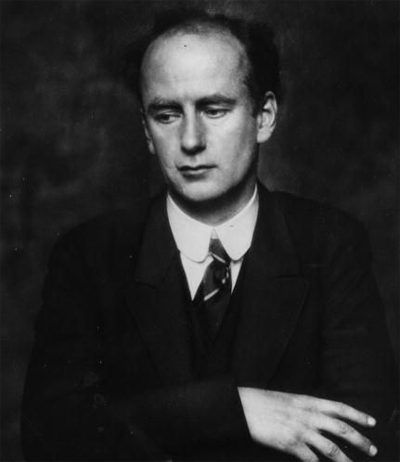RICHARD WAGNER - 195ვაგნერის დირიჟორობის უდიდესი საოცრება. ქვემოთ მოყვანილ სიტყვებს ვეღარაფერს დავუმატებ.
No other conductor is more associated to the concept of "Wagner conducting" than Wilhelm Furtwängler - with the possible exception of Clemens Krauss, Strauss’s librettist in Capriccio, from a purely musical point of view. Furtwängler has incarnated for more than half a century the idea of a complete view of the German composer’s work, because this conductor’s highly developed vision of the interpretation of Wagner’s music was more than up to Wagner’s mythologic narration. It is important to notice how much ancient Greek culture was part of Furtwängler’s own education.
This would explain a part of this unique tragic sense this artist threw into his view on the Ring. Nonetheless, most opera lovers know Furtwängler mainly for his post-war performances and the HMV recordings.I intend to explain below the idea that no one can claim to have an idea of Furt’s conducting before the war, if he never experimented his live recordings from the 30’s in London, Vienna and Bayreuth. Post-war recordings are intense, tragic, perfect in classicism, slightly slower, but had lost the excited, enthusiastic, nervous phrases of pre-war recordings. As a biographical comment, it is important to understand that the III Reich broke this man who refuse to leave Germany, not because of any sympathy with nazism, but because he thought music, Mozart and Beethoven were essential to oppressed people during wartime. More honestly, he was so much attached to his beloved Germany – in a cultural and clearly not in a political sense - that, if he had left it , he would have died of sadness and yearning. Being used as a toy by the nazists, who humiliated him and took profit of the publicity based on his inability to leave, he finished the war almost mentally dead and charged by the allies with the crime of having been the nazist he never was.
The highlights of Die Walküre in 1936 in Vienna are the perfect recording to understand what I previously meant. Made of many excerpts – one or two minutes long, some less –
those highlights introduce a frenetic view of the score, with imaginative ardent phrasing, shining with clarity (even in that recorded sound!), naturality and musicality. The cello has an unique emotive distinct vibration in the first act; the final scenes of the second act are just frantic. There are so many ideas there. Also, the strings lead the Walkürenritt rather than the brass (an unforgettable idea of movement), among many other niceties. There is no interest in multiplying examples: let’s say it is full of life, of exciting theatrical and musical imagination.
People who believe Furtwängler to be a slow conductor would be very surprised.The third act of Walküre recorded in Covent Garden in 1937 with Bockelmann, Flagstad and Müller is a collectors’ classic and should be known by everybody, since, besides the greatness of the conducting, three reference incarnations of Wotan, Brünnhilde and Sieglinde are offered here.
Essential for all wagnerians, the set of 3CD LYS offers large highlights of three Götterdämmerung performances of the 30's. In an interesting sound, including complete scenes, those performances are just grandiose and feature the best in Wagnerian singing in XXth century: Flagstad and Melchior have the attitude, the heroic feeling never found later, Herbert Janssen is unmatched in vocal perfection, stylistic elegance, a truly aristocratic Gunther. Frida Leider, a kind of warmer Nilsson, with a small but incisive untiring voice, is another part of this mythic era and Kerstin Thorborg’s Waltraute is another idea of what singing an epic and tragic drama means. Jaro Prohaska and Ludwig Hoffmann, without reaching this level, are fantastic compared to nowaday’s standards, as well as the young Ludwig Weber.
The three HMV studio recordings of Götterdämmerung in the Abbey Road studios around 1950 will introduce the later Furtwängler style as it is mainly known.
Intense, tragic, quite pessimistic, a bit slower (but not so much, opposing the legend - Furt’s tempi, even in the 50's, are really much faster than those under the baton of Solti, Karajan, Barenboim or Levine…),
with a classic transparence and elegant phrasing, always the grandiose feeling, perhaps with more art but less spontaneity. --
Olivier Galiri( ხაზგასმა ყველგან ჩემია. უფრო ვრცლად იხ.
http://www.geocities.com/rmlibonati/ringolivier.html )
Richard Wagner: DIE WALKÜRE, Act IIIRoyal Opera House, Covent Garden, 26 May 1937
Rudolf Bockelmann (Wotan)
Kirsten Flagstad (Brünnhilde)
Maria Müller (Sieglinde)
Gladys Ripley (Schwertleite)
Elsa Stenning (Helmwige)
Edith Coates (Siegrune)
Mae Craven (Gerhilde)
Thelma Bardsley (Ortlinde)
Linda Seymour (Waltraute)
Gwladys Garside (Grimgerde)
Evelyn Arden (Rossweisse)
Orchestra of the Royal Opera House, Covent Garden
Conductor: Wilhelm Furtwängler
Richard Wagner: GÖTTERDÄMMERUNG, ExcerptsRoyal Opera House, Covent Garden, 1 June 1937
Kirsten Flagstad (Brünnhilde)
Lauritz Melchior (Siegfried)
Ludwig Weber (Hagen)
Herbert Janssen (Gunther)
Maria Nezadal (Gutrune)
Kerstin Thorborg (Waltraute)
Chorus of the Royal Opera House, Covent Garden
London Philharmonic Orchestra
Conductor: Wilhelm Furtwängler
Richard Wagner: DIE WALKÜRE, Act II, ExcerptsRoyal Opera House, Covent Garden, 1 June 1938
Frida Leider (Brünnhilde)
Karl Kamann (Wotan)
Kerstin Thorborg (Fricka)
London Philharmonic Orchestra
Conductor: Wilhelm Furtwängler
Richard Wagner: GÖTTERDÄMMERUNG, Act II, Scenes 4-5Royal Opera House, Covent Garden, 7 June 1938
Frida Leider (Brünnhilde)
Lauritz Melchior (Siegfried)
Wilhelm Schirp (Hagen)
Herbert Janssen (Gunther)
Anny von Stosch (Gutrune)
Chorus and Orchestra of the Royal Opera House, Covent Garden
Conductor: Wilhelm Furtwängler
Furtwangler CG 1937-1938 @ ALLDRIVES (Ludwig Beethoven)
მიმაგრებული სურათი



